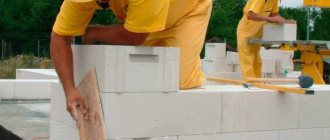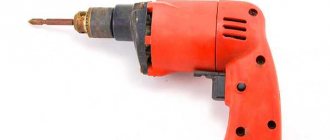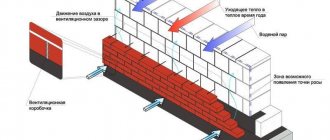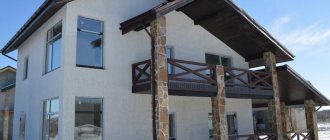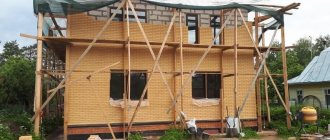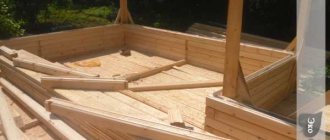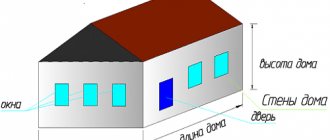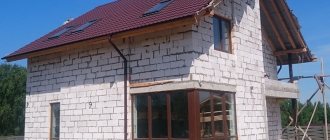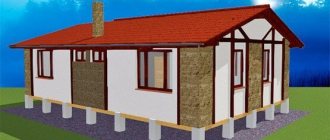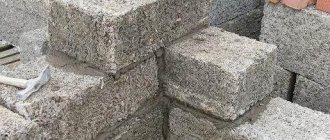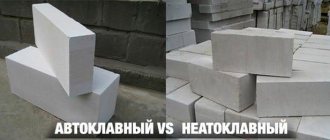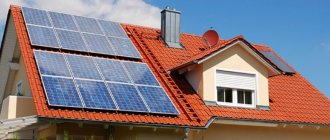Choosing wood concrete or aerated concrete for building a house is precisely the dilemma that often faces those who want to create a strong and durable building that has the best characteristics and properties, and does not require too much cost. Both materials are supplied at an affordable price, made on the basis of a concrete mixture with different fillers.
Arbolite and aerated concrete blocks belong to the class of lightweight concrete. They can be used for the construction of light, warm, inexpensive private housing construction projects. Due to the similarity of some technical characteristics, it is sometimes difficult for craftsmen to make the right choice, therefore, before performing calculations and creating projects, it is necessary to carefully familiarize themselves with the features of production and application, properties and parameters, advantages and disadvantages of both types of blocks.
What is aerated concrete and wood concrete - production technology
To understand whether wood concrete or aerated concrete is better, you first need to understand the features of block production. Both materials are types of lightweight concrete, supplied in the format of blocks of a certain size. The composition of wood concrete includes cement with high strength characteristics and pine needle chips (about 90%), as well as various additives for the mineralization of components (sodium silicate, aluminum sulfate, calcium nitrate, chloride).
The main task in wood concrete production technology is to ensure maximum adhesion of wood chips to the binder component, which is cement. Most often, waste from the logging industry is used, choosing a specific type of wood chips: fir, spruce, pine, poplar, beech, birch or aspen (cotton, hemp, straw, flax can also be used).
The size of the chips is regulated by GOST and depends on the species. First, the material is treated with special chemical compounds (which increases adhesion), then mixed with a cement solution of grade M400/M500.
Next, the mixture is sent to molds, where it can be affected by a vibropress and vibratory rolling. The mixture can be poured either immediately or in layers. The characteristics of the blocks depend on the technology, which must comply with the regulations.
Aerated concrete is made from cement, sand and special additives (ash, slag and other industrial waste can be added). The main feature of the material and its difference from all other types of concrete is the introduction of gas-forming agents into the composition, which trigger a chemical reaction with the release of hydrogen. Typically, aluminum powder acts as a gas generator.
During the reaction, bubbles appear - thanks to them, concrete is obtained with a porous structure. Next, the solution is poured into molds and subjected to high temperature treatment, which makes the blocks durable and able to withstand various loads.
What are aerated concrete and wood concrete? Production technology
Both materials are manufactured in the form of blocks and belong to the category of lightweight concrete. The composition of wood concrete includes high-strength cement and pine chips (up to 90%), additives promote mineralization: aluminum sulfate, sodium silicate, calcium chloride and calcium nitrate. Aerated concrete contains sand, cement, and additives. The material is based on gas-forming agents. Industrial waste can be added to the composition: slag, ash.
When cement combines with gasifiers at high speed, a chemical reaction occurs, accompanied by the release of hydrogen. It swells the solution. The result is a material with a porous structure. Aluminum powder plays the role of a gas generator. The prepared solution is poured into molds. Thanks to this, blocks of different sizes are obtained. If necessary, they can be cut, which is facilitated by the structure of the material. Excellent strength characteristics are ensured thanks to high-temperature processing.
The technology for producing wood concrete blocks is significantly different. The main problem is considered to be the difficulty of ensuring the adhesion of wood chips and binding components (cement). Only natural raw materials of a certain type are used. Typically, waste from the logging industry is used for this purpose. The raw materials must be a certain type of wood: pine, spruce, fir, beech, poplar, aspen or birch. They also use rice straw, cotton, flax, and hemp.
Regulatory documents regulate the size of chips. The parameters of the crushed raw materials vary depending on the type of wood. To ensure good adhesion of wood chips with other additives, it must be treated with chemicals. When producing wood concrete blocks, it is allowed to use cement grade M400, or better yet M500.
Characteristics, advantages and disadvantages of aerated concrete
When thinking about whether to choose wood concrete or aerated concrete block for construction, you must first study the properties and parameters of each material separately, compare them and make the right choice based on the requirements and design calculations.
Main technical characteristics of aerated concrete:
- Density – ranges from 400-800 kg/m3
- The upper limit of the thermal conductivity coefficient is about 0.12 W (m*oC)
- Compressive strength class - directly depends on the density of the material (for example, the D500 block has a strength of B2.5)
- Density grade – from D350 to D700
- Vapor permeability level – 0.2 mg/mchPa
- Sound conductivity – high
- Frost resistance – within 50-100 freeze/thaw cycles
- Water absorption is high, up to 15% of the total weight of the product
Among the advantages that aerated blocks have, it is worth highlighting the following: environmental friendliness and safety, high level of strength, low weight, temperature resistance, ideal geometric dimensions and surface evenness (and, therefore, increased masonry speed, reduced consumption of masonry mixture), low thermal conductivity, ability to cut, fire safety, large dimensions, simple and quick installation.
Among the disadvantages of aerated concrete, it is worth noting: not a very attractive appearance (the need for finishing the building inside and outside), an increased level of water absorption and the need to protect the blocks from moisture (otherwise the structure will absorb water and in frost will quickly collapse and become cracked), low durability to fracture load, crumbling and susceptibility to deformation.
Thus, aerated concrete is a good material for building a house, thanks to which you can quickly and easily build a building yourself. But without additional measures to protect against various influences, one cannot hope for a long service life.
Advantages and disadvantages of gas block
To see how wood concrete actually compares to aerated concrete, let’s look at all the pros and cons of aerated concrete.
Advantages:
- Relatively light weight of blocks. So, concrete or brick weighs 1.5-2 times more with the same volume. This reduces foundation requirements and saves money.
- The large dimensions of the blocks facilitate and speed up the construction procedure.
- The material can be easily processed with hand and mechanized tools.
- Aerated concrete contains cement, water and some additives - completely safe components.
- High coefficient of frost resistance of the material (up to 100 freezing/defrosting cycles).
- Exact compliance with the specified dimensions, which allows you to save on mortar for masonry.
- Possibility of manufacturing blocks of any configuration.
Flaws:
- Walls made of aerated blocks require a reliable reinforced foundation so that the blocks do not crack during shrinkage.
- The material is not resistant to tearing or stretching.
- Aerated concrete does not allow moisture and air to pass through. A ventilation system must be installed in the room.
- If the walls are not thick enough, the room requires additional noise and heat insulation.
Aerated concrete has been widespread in the construction niche for quite some time. Therefore, certified blocks are easy to find and buy at a competitive price.
Characteristics, advantages and disadvantages of wood concrete
The features of arbolite blocks are determined by the composition of the material and the technology of its production. Under certain conditions, a house made of wood concrete will last a long time and reliably, but if there is no attention to the properties of the material, it will quickly collapse.
Main technical characteristics of wood concrete:
- The upper limit of thermal conductivity is about 0.15 W (m*oC)
- Weight of a cubic meter of standard blocks – 683 kilograms
- Frost resistance – up to 25 freeze/thaw cycles
- Water absorption – high, 40-85%
- Bending strength – in the range of 0.7-1 MPa
- Reliability – high, provided that the structure is not subject to constant pressure
Positive properties of wood concrete blocks: low weight, high level of strength, lack of crumbling, normal thermal conductivity, safety and environmental friendliness, vapor permeability.
Disadvantages of wood concrete for building a house:
- Blocks strongly absorb moisture - the exact indicator varies depending on the type of wood and quality, features of chemical processing of raw materials
- High thermal conductivity - to keep the house warm, you will have to take serious thermal insulation measures
- Poor compatibility with metal and concrete - due to the fact that wood concrete tends to absorb and then release moisture, which has a bad effect on other materials
- Combustion - the blocks consist of 90% wood chips, therefore they cannot be used for the construction of objects with a medium/high level of fire hazard
Comparison of two materials based on key characteristics
When thinking about whether to choose a gas block, wood concrete or foam block for your home (which is better for a specific object with certain requirements), you need to compare them according to their basic properties. Taking into account the fact that aerated concrete and foam concrete blocks are similar in technical parameters, it is most relevant to consider aerated concrete and wood concrete.
The most important parameters for building a house:
- Thermal conductivity - both materials store heat well, but aerated concrete demonstrates better characteristics due to its porous structure. Wood concrete requires mandatory and specially designed thermal insulation.
- Frost resistance - here ahead is aerated concrete, which can withstand 50-100 cycles (2-4 times more than wood concrete).
- Weight - both materials are light, but here the leader is aerated concrete, the mass of which, with the same dimensions, is 1.5 times less than wood concrete blocks.
- Evenness and geometry - the aerated concrete (and gas silicate) block has ideal dimensions and accuracy, which facilitates the installation process, reduces the cost of masonry mortar, and simplifies finishing. Wood concrete is made from wood chips, the size of which can affect errors in geometry (about 5 millimeters).
- Seam thickness - aerated concrete blocks require a minimum layer of masonry mortar (maximum 3 millimeters), wood concrete requires more mortar consumption due to errors in geometry.
- Dimensions - both types of blocks are quite large and can be made in different dimensions. The size of a standard aerated concrete block for the construction of a load-bearing wall is: 62.5x37.5x25 centimeters. Provided that the weight is minimal, laying is quick and easy. Wood concrete and its standard dimensions: 50x30x20 centimeters with greater weight.
- Water absorption - despite the fact that the indicators are very different, both materials react to moisture in approximately the same way: wood concrete absorbs a lot of water, but affects the strength and safety of the building in much the same way as a small percentage of absorbed moisture destroys the pores in aerated concrete. Therefore, both materials are not suitable for buildings that will be constantly affected by moisture and require mandatory protection.
- Fire hazard – wood concrete is noticeably inferior to aerated concrete, since it is made from wood and even after chemical treatment it burns better.
- Cost - a lot here depends on the quality of materials and production features, as well as the pricing policy of the manufacturing company. But on average, the difference in price is 1000 rubles per cubic meter and aerated concrete is cheaper.
What is better for building a house
Craftsmen claim that both materials are light and warm, and therefore suitable for the construction of low-rise residential buildings. But wood concrete, nevertheless, retains heat better. And even if it strongly absorbs moisture, thanks to modern finishing materials the performance is the same as that of aerated concrete. But the effect of water on the blocks is different: wood concrete swells, aerated concrete becomes covered with cracks.
On the other hand, in conditions of high humidity levels, the thermal insulation index of wood concrete decreases by 25%, and the gas block remains stable.
In terms of fire resistance, wood concrete is inferior, but it does not produce smoke or toxins when burning, so it can be used to create residential buildings. Both types of blocks have proven themselves well in low-rise construction. For wood concrete, you can design a cheap and simple foundation; for an aerated concrete block, the foundation must be more serious.
In installation, aerated concrete has a significant advantage - perfectly even blocks can be laid with a thin seam, quickly and efficiently, without the use of special equipment. The walls do not freeze at the seams, which cannot be said about wood concrete blocks, where there are usually cold bridges.
In the case of aerated concrete, savings are also achieved due to less time consumption and volumes of finishing materials. The gas silicate block is finished easier and faster; it is more difficult to work with wood concrete.
The technical characteristics of both materials, which are important for building a house, differ slightly. But wood concrete requires high costs for construction, finishing, and the material itself (its cost is higher than the price of gas silicate). In addition, you need to find out in advance whether there are factories nearby for the production of wood concrete in the required sizes, since delivery from afar can be expensive.
Approximate calculation of the cost of erecting walls from two materials
Due to the fact that many properties of aerated concrete and wood concrete are similar or are offset by finishing features, the cost of a house built from one or another material often becomes the decisive factor in the choice for craftsmen and developers.
Calculation of a house made of aerated blocks:
- 1m3 of aerated concrete block costs about 3,200 rubles; a standard block measures 60x40x25 centimeters.
- The construction is 10 meters wide, 3 meters high and 12 meters long. The perimeter is 44 meters, area: 44x3 = 132 m2, minus window openings (about 16 m2), it comes out to 132-16 = 116 m2.
- The area of the block with the indicated dimensions is 0.6x0.25=0.15 m2.
- How many blocks are needed for a house: 116/0.15=773.3 (774).
- The number of blocks in 1m3: first, the area of one block is calculated (0.6x0.4x0.25=0.06 m3), then how many blocks are in 1m3 (1/0.06=16.6 pieces).
- For a house of 774 blocks you need 774/16.6 = 46.6 (47) cubic meters of gas block.
- Cost – 3200x47 = 150400 rubles.
Calculations for wood concrete:
- 1m3 of wood concrete costs about 4,400 rubles.
- The block size is 50x40x25, the area of the wood block is 0.5x0.25=0.125 m2.
- To build a wall equal to 116 m2, you need 116/0.125 = 928 blocks.
- How many blocks are in 1m3: 0.5x0.25x0.4=0.05, 1/0.05= 20, how many cubic meters are needed 928/20=46.4 (47).
- Cost – 4400x47=206800 rubles.
Thus, the construction of the same structure from wood concrete and aerated concrete does not require significantly different amounts (aerated concrete is approximately 25% cheaper). The materials are similar in properties and characteristics, so each master must first determine the key requirements for the building material, and then choose the one that is most suitable.
Approximate cost calculation for the construction of walls made of wood concrete and aerated concrete
For most developers, the decisive argument is the cost of construction. And this is not surprising. Therefore, let's calculate how much the walls will cost using each of the materials.
1 m3 of aerated block costs on average about 3,200 rubles, wood concrete is much more expensive, a cube of material will cost 4,400 rubles. To calculate the cost of building walls, you must first find out the number of blocks required and their size. Let it be 600*400*250.
Let’s assume that our design is as follows: the height of the wall is 3 meters, the length is 12 meters, and the width is 10. To make the calculations easier, we will not take into account the partitions. The perimeter will be equal to 44, and the area will be calculated using the generally accepted formula: 44*3=132 m2. From this value we subtract window and door openings, say 16 m2. Result: 132-16=116 m2
The area of one block measuring 600*400*250 will be equal to 0.15 m2 (0.6*0.25). In this case, the required quantity is determined as follows: 116/0.15 and we get 773.3, and taking into account rounding (preferably up) - 774. Now you need to calculate the number of blocks in 1 m3. To do this, we find out the area of one product: 0.6*0.25*0.4=0.06 m3. 1/0.06=16.6 pcs. 774/16.6= 46.6 m3. This number of blocks is needed to build a house in cubes.
Now we make similar calculations in the case of wood concrete, taking into account its special dimensions. Again, assume the block size is 500*-400*250. The dimensions of our house remain the same, so we calculate the area of the wood block: 0.5*0.25=0.125 m2
116/0.125= 928 pieces of blocks will be required to build a wall equal to 116 m2. Let's round up the required cubic capacity to 47 m3. The cost of wood concrete: 4400*47=206800 rubles, and aerated concrete: 3200*47=150400 rubles.
